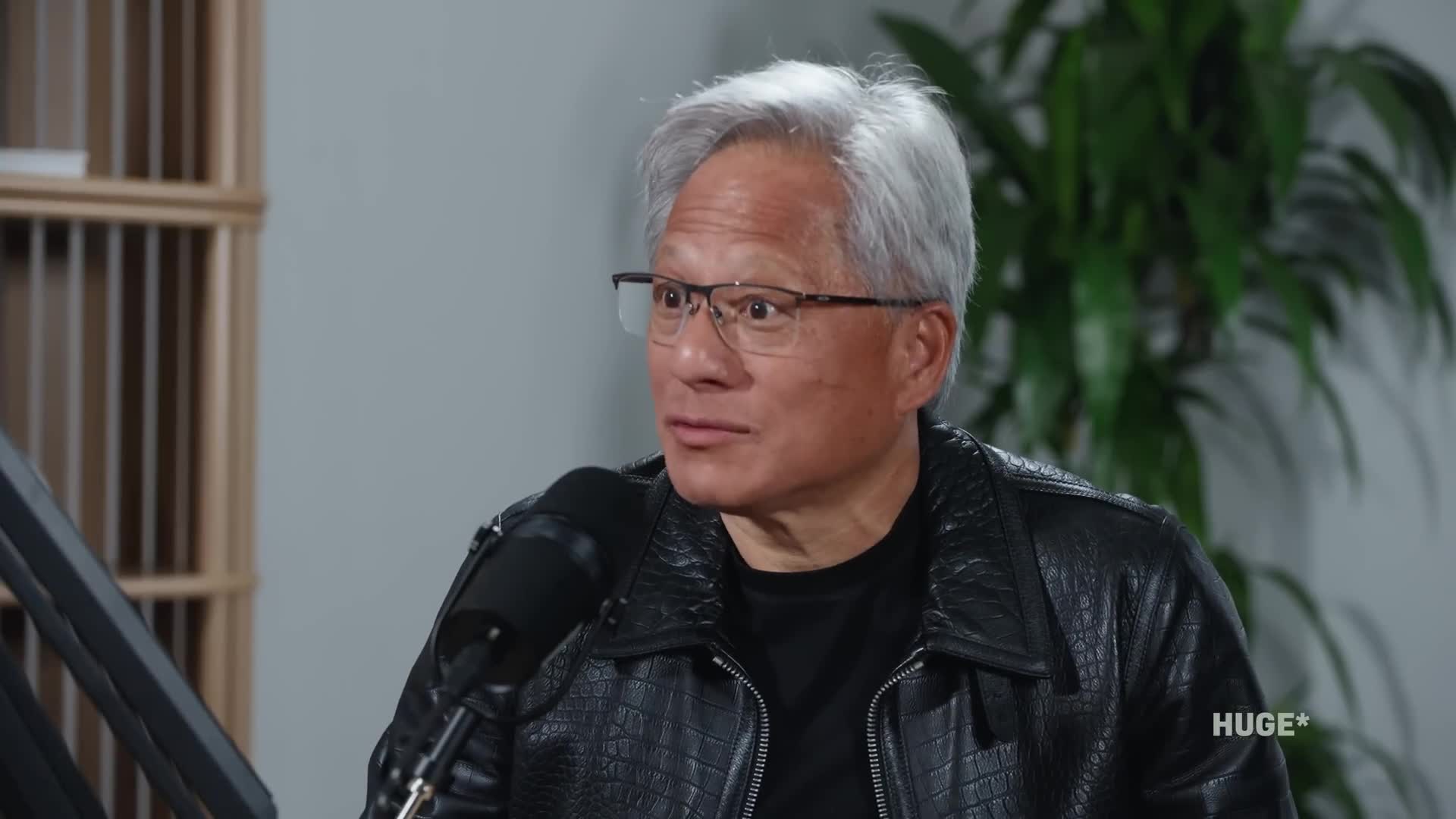Science
What are the main components of a gas turbine engine and what makes the high pressure turbine critical?
A gas turbine engine consists of four main sections: the fan, compressor, combustor, and turbine. Air is compressed through the fan and compressor, then enters the combustor with fuel, creating high pressure, high temperature gases that flow into the high pressure turbine. This turbine section is the most critical part of the engine because it operates in extreme conditions, with gases reaching about 1,500°C, often in corrosive environments like salt air. The high pressure turbine must withstand these harsh conditions while ensuring flight safety, making material selection particularly important for this component.
Watch clip answer (05:48m)How will the focus of AI development change in the next decade compared to the past decade?
According to Jensen Huang, while the last decade was primarily focused on the fundamental science of AI, the next decade will shift towards application science. Although AI science will continue to advance, the emphasis will be on applying AI across various sectors including digital biology, climate technology, agriculture, fisheries, robotics, transportation, and logistics optimization. This transition represents a move from developing core AI capabilities to implementing practical applications that transform industries and solve real-world challenges. This shift explains why it's becoming increasingly difficult to predict exactly how we will use emerging technologies in the future.
Watch clip answer (00:55m)What is asteroid 2020ND and why is NASA concerned about it?
Asteroid 2020ND is a giant celestial body that NASA has identified as potentially hazardous. It's over 50% larger than the London Eye and is approaching Earth, expected to make a close pass at just 0.034 astronomical units from our planet. The asteroid is classified as potentially hazardous due to its size and proximity to Earth's orbit. These celestial objects are particularly fascinating as they are remnants from the formation of our solar system, providing valuable insights into its early development and composition.
Watch clip answer (00:10m)What is asteroid 2020nd and why is NASA warning about it?
Asteroid 2020nd is a massive space rock approaching Earth that NASA has classified as potentially hazardous. This asteroid is approximately 443 feet in size, making it about 50% larger than the London Eye landmark in the UK. NASA's warning stems from the asteroid's significant size and its relatively close approach to our planet. The space agency monitors such large celestial objects that come within concerning proximity to Earth, labeling them as potentially hazardous when they could pose a theoretical risk, even if an actual collision is unlikely.
Watch clip answer (00:36m)What is NASA's warning about asteroid 2020ND approaching Earth?
NASA has issued a warning about asteroid 2020ND, a massive space rock approaching Earth that has been classified as 'potentially hazardous.' This asteroid is estimated to be more than 50% larger than the London Eye, which stands at 443ft high, making it a significant celestial object on NASA's radar. The asteroid, designated as 2020ND, will make its closest approach to Earth soon according to reports from Birmingham Live. NASA's concern stems from the asteroid's size and its trajectory bringing it within a close distance to our planet, though specific details about its exact proximity weren't fully detailed in this segment.
Watch clip answer (00:40m)What are asteroids and how are they connected to planetary formation?
Asteroids are the remnants from the formation process of our inner solar system. About 4 billion years ago, the inner planets (Mercury, Venus, Earth, and Mars) formed through an agglomeration process, and asteroids are essentially the leftover bits and pieces from this formation. Similarly, comets are the remnants from the formation of the outer planets like Jupiter, Saturn, Uranus, and Neptune. These celestial fragments serve as valuable time capsules that help scientists understand the early development of our solar system.
Watch clip answer (00:27m)


